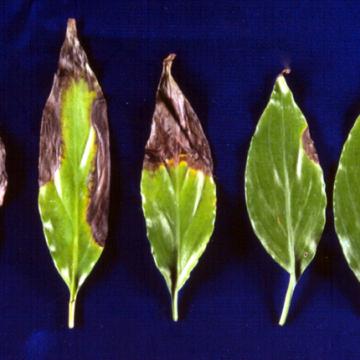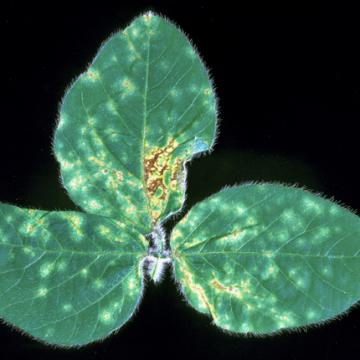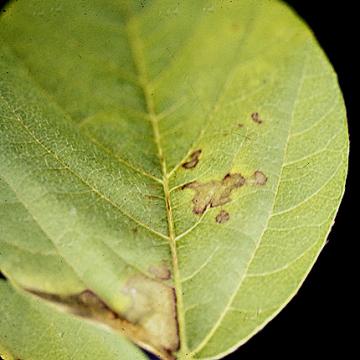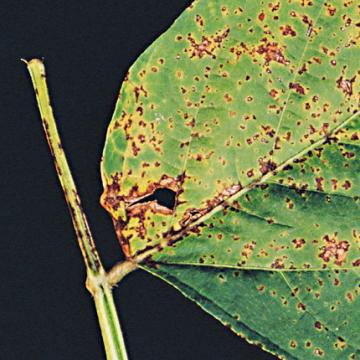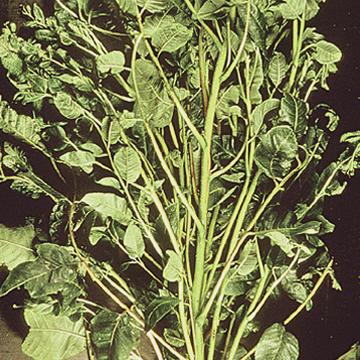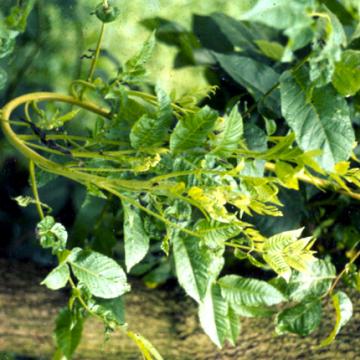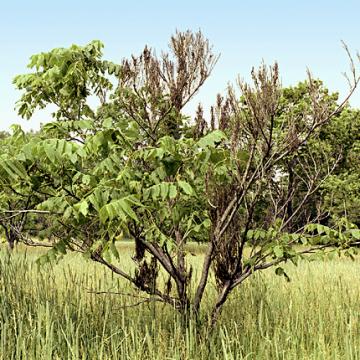DISEASE: Bacterial blight
HOST: Soybean
Leaves with yellowish brown necrotic lesions. Lesions also may be yellow to light brown and bordered by yellowish green halos. Lesions occur on stems, petioles, and pods.
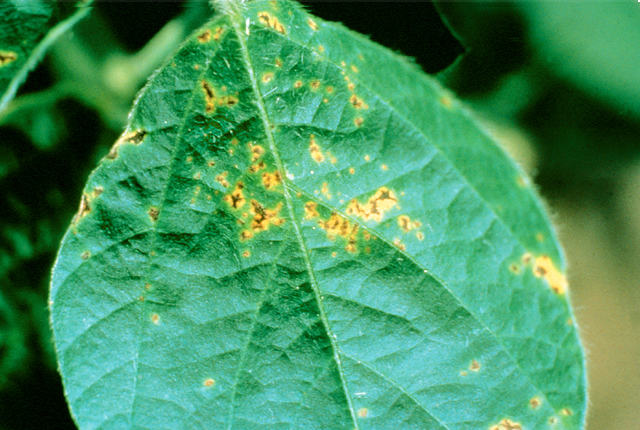
Bacterial blight | Soybean
DISEASE: Bacterial blight
HOST: Soybean (Glycine max)
PATHOGEN: Pseudomonas syringae pv. glycinea
SOURCE: J. B. Sinclair
DISEASE: Bacterial blight
HOST: Spathiphyllum
Progression of disease severity on leaves from right to left.
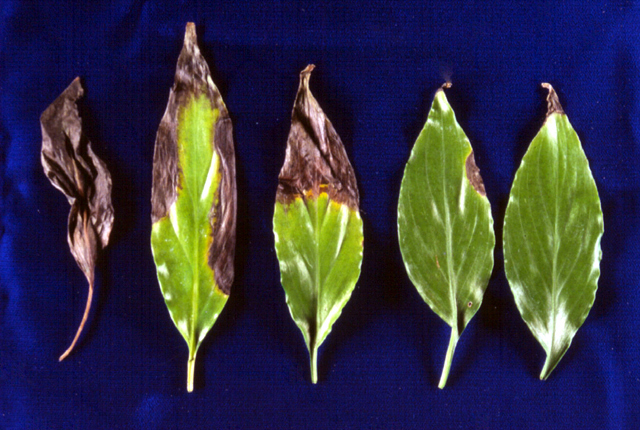
Bacterial blight | Spathiphyllum
DISEASE: Bacterial blight
HOST: Spathiphyllum (Spathiphyllum sp.)
PATHOGEN: Xanthomonas axonopodis pv. dieffenbachiae
PATHOGEN SYNONYM: Xanthomonas campestris pv. dieffenbachiae
SOURCE: A. Alvarez
DISEASE: Bacterial leaf spot
HOST: Soybean
Early symptoms of bacterial blight.
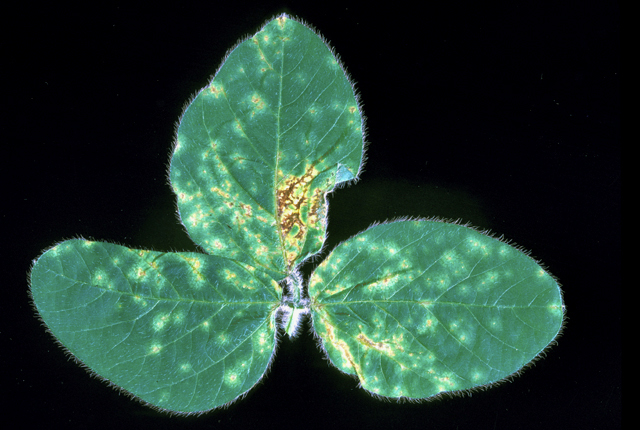
Bacterial leaf spot | Soybean
DISEASE: Bacterial leaf spot
HOST: Soybean (Glycine max)
PATHOGEN: Pseudomonas syringae pv. glycinea
SOURCE: D. Cupples
DISEASE: Bacterial leaf spot
HOST: Soybean
Leaf with large, light brown necrotic lesions.
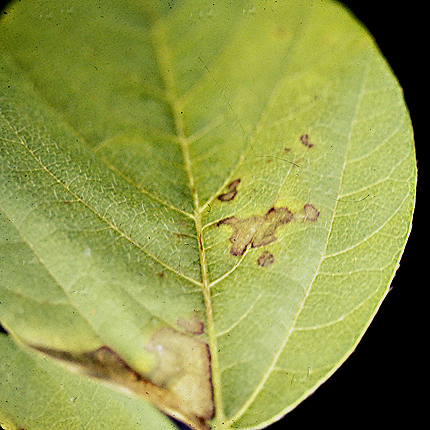
Bacterial leaf spot | Soybean
DISEASE: Bacterial leaf spot
HOST: Soybean (Glycine max)
PATHOGEN: Pseudomonas viridiflava
SOURCE: R. Gitaitis
DISEASE: Bacterial pustule
HOST: Soybean
Early symptoms are minute, pale green spots on young leaves. Later, small pustules form in the center of spots, best observed on underside of leaves. Spots vary in size and darken with age and lesions coalesce. Dead areas are torn away by wind.
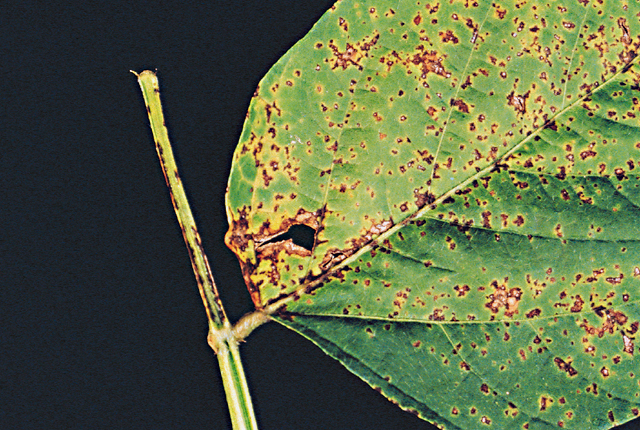
Bacterial pustule | Soybean
DISEASE: Bacterial pustule
HOST: Soybean (Glycine max)
PATHOGEN: Xanthomonas axonopodis pv. glycines
PATHOGEN SYNONYM: Xanthomonas campestris pv. glycines
SOURCE: APS
DISEASE: Bunch disease
HOST: Walnut
Foliage with bunchlike symptoms.
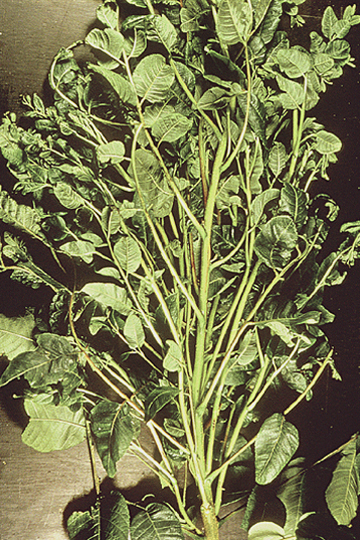
Bunch disease | Walnut
DISEASE: Bunch disease
HOST: Walnut (Juglans nigra)
PATHOGEN: 'Candidatus Phytoplasma pruni'
PATHOGEN SYNONYM: Phytoplasma X-disease group
SOURCE: R. Green
DISEASE: Bunch disease
HOST: Walnut
Twisted shoot with yellow leaves, a symptom of bunch disease.
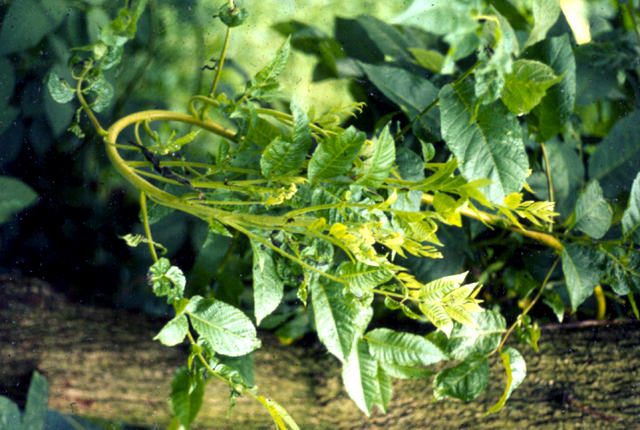
Bunch disease | Walnut
DISEASE: Bunch disease
HOST: Walnut (Juglans regia 'Hartley')
PATHOGEN: 'Candidatus Phytoplasma pruni'
PATHOGEN SYNONYM: Phytoplasma X-disease group
SOURCE: E. Braun
DISEASE: Bunch disease
HOST: Walnut
Tree with advanced disease symptoms of branch and twig death.
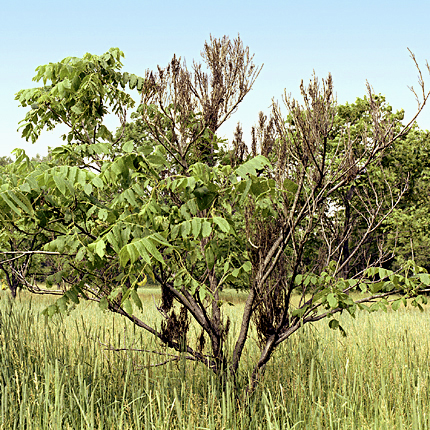
Bunch disease | Walnut
DISEASE: Bunch disease
HOST: Walnut (Juglans microcarpa)
PATHOGEN: 'Candidatus Phytoplasma pruni'
PATHOGEN SYNONYM: Phytoplasma X-disease group
SOURCE: W. Sinclair
DISEASE: Deep bark canker
HOST: Walnut
Reddish brown exudate flowing from longitudinal cracks in the trunk. Cankers are deep extending into wood.
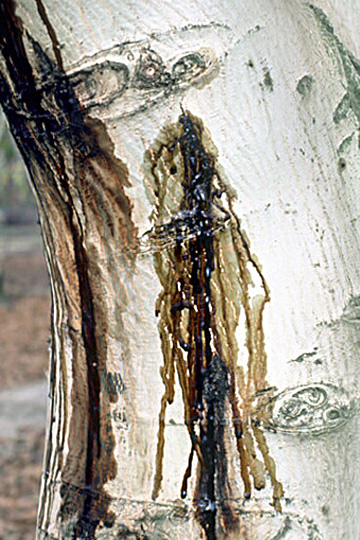
Deep bark canker | Walnut
DISEASE: Deep bark canker
HOST: Walnut (Juglans regia 'Hartley')
PATHOGEN: Brenneria rubrifaciens
PATHOGEN SYNONYM: Erwinia rubrifaciens
SOURCE: B. Teviotdale



